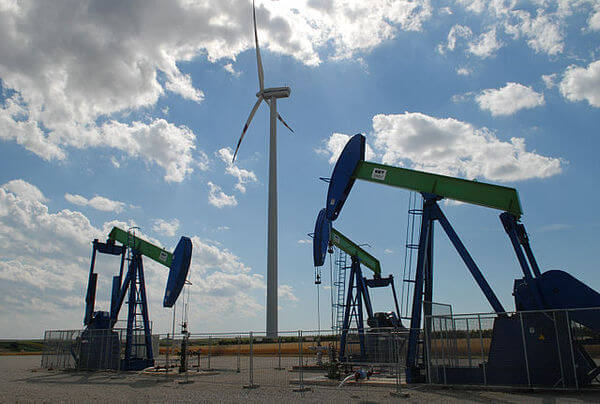News Release from windfair.net
Wind Industry Profile of
More Countries Turn to Clean Wind Energy
There is scarcely a patch of earth, which wind energy has not yet conquered. In times when wind and solar energy are usually cheaper than fossil energy production, more and more countries are showing interest in renewable energy.
Falling oil price leads to rethinking
Saudi Arabia, for example, left its mark with their 'Vision 2030' last year when the world champion of oil production introduced a new development program. The program aiming to boost the local economy and bring the country closer to Western standards, has for the first time set targets for the expansion of renewable energies. As a desert state, Saudi Arabia has ample space and resources to harvest wind and solar energy on a large scale, but had yet shown only moderate interest. After all, they thought to have enough oil and gas reserves to avoid being reliant on energy imports for the foreseeable future. With the rapid fall in oil prices, however, the sheikhs realized that their resources couldn't be relied on forever.
The vision is simple: invest. Within the next six years renewable energies are to be financed with 50 billion US dollars and in the next three years 3.45 gigawatts of renewable energy are to be provided, which will supply three million people. An ambitious project for the short period of time, especially since the first tender for wind projects launched at the beginning of the year was immediately put on the line again – allegedly because preparations on the ground are not yet finished.

Does the future of Saudi Arabia look like this? A wind turbine next to oil pumps – here in Lower Austria (Image: By Techcollector (Own work) [CC BY-SA 3.0 or GFDL], via Wikimedia Commons)
Tender is still full on schedule
Now on Sunday, the first tender for wind energy was launched. This time for a different area in the north of the country with a capacity of 400 megawatts. However, the timetable for the '2030 Vision' is not endangered by the delay, assured energy minister Al Falih. By the end of the year, a further 300 MW tender for wind projects will be announced, with 300 additional megawatts of solar projects to be tendered in August. “As we enter the second half of the year, we remain committed to ensuring our ambitious program remains on-track to deliver the value and opportunities targeted by the programme,” said Al Falih, according to press reports.
And the attention is great: 600 representatives from 48 nations had already shown their interest at the beginning of the year, 24 of which were selected for further inspection. By August 10th, everyone will have time to qualify for the next round.
 China is discovering its neighbors
China is discovering its neighbors
Pakistan is already one step ahead. The first wind project in the country, which consisted of only a few individual turbines, started operations in 2009, but only became a real wind farm after an expansion in 2012. The fact that the country has moved into the focus of the wind industry is, in the meantime, a merit of the Chinese. The two neighboring states signed a contract worth 57 million dollars which China intends to invest in energy projects in Pakistan. Most of this will go into the coal industry, because Pakistan's government wants to take advantage of the favorable coal price and build massive coal-fired power plants for domestic and imported coal (from China).
However, the renewables also benefit from the millions. For example, a new 50 MW wind farm opened near Karachi last month. It is located in a corridor that, according to the World Bank, offers potential for up to 11,000 MW of wind energy.
Potential that needs urgent access, as Pakistan's rapidly growing population needs more and more energy. According to the Thomson Reuters Foundation, the country is currently able to produce 23,000 megawatts of energy – but this is not enough at peak load times. A further 5000 MW are needed at least, to stop increasing power failures. Wind and solar energy offer the country a cost-effective way out of electricity shortage.
Interest of investors
The new projects launched by the Chinese are expected to add 17 GW of additional energy in the coming years. Up to now, 13 of these projects are feeding energy into the grid, including 640 MW of wind energy. However, the unused reserves put the country increasingly in the focus of international industry. In June, the International Finance Corperation (IFC), a member of the World Bank, decided to invest more than $ 140 million to build three wind farms. Other international investors are also showing interest.
So it is to be hoped that the Pakistani government will also learn from their ‚big brother‘ China that investing in coal-fired power plants will not help to improve the situation in the country, which is already battered by climate change and regularly visited by floods and droughts.
- Author:
- Katrin Radtke
- Email:
- press@windfair.net
- Keywords:
- China, Saudi Arabia, Pakistan, wind energy, fossil energy

























